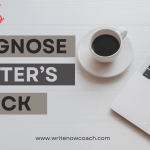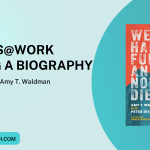Countdown to NaNo: The Who
 Maybe one of the best part of the write-a-thon is choosing who you get to spend it with. I’m not talking about your NaNo buddies, though they are important. I am talking about the characters in your book. These will be your most constant companions for the next month. You either want to choose people you adore spending time with or people you love to hate—otherwise this could be a pretty boring month for you.
Maybe one of the best part of the write-a-thon is choosing who you get to spend it with. I’m not talking about your NaNo buddies, though they are important. I am talking about the characters in your book. These will be your most constant companions for the next month. You either want to choose people you adore spending time with or people you love to hate—otherwise this could be a pretty boring month for you.
The Indigo Girls have a wonderful love song called, Collecting You on their CD Become You. In it they sing, “I could paint you in the dark/Cause I’ve studied you with hunger like a work of art/These are very secret days/I collect my information then I stow it all away/ … Call me, I’m collecting you.” As writers, no encounter or experience goes to waste. Like a cook collects herbs from the garden, we collect the appearances, habits, impressions, and words of those we encounter. The cook is thinking about her soup, and we are thinking about our characters. We stow away this information until it is time to create our characters.
The time is now. Who are the people who will live your story? Who is this book going to be about? In your project notebook, make a list of characters. For each character, consider:
*Age
*Gender
*Physical description
*Personality traits
*Work; work space description
*Friends, family, love interest
*Living space description
*Hobbies
*Background (childhood, education, formative events)
*Values
*Internal and external conflict. What do they want? Who or what stands in their way?
As you work on this list don’t forget about the people you have been collecting over the years. Remember the kid in your 4th grade class who used to eat his boogers? Are there aspects of him that belong in your book? Use them. Look at public figures—do they possess some of the same qualities you see in your characters? Borrow them. Think about your own life experience—are there pieces of your own journey that might belong to one of the characters as well? Lend it to them.
Need more help? Use a list of classic archetypes to develop your characters. Study the archetype of the hero, victim, saboteur, and vampire—and see how their descriptions and appearances in literature and film might help you create believable characters. am also a big fan of using archetypes to develop characters. Caroline Myss has a wonderful collection of archetype descriptions along with examples in her book Sacred Contracts: Awakening Your Divine Potential.
Need an example? One of my favorite characters is Janet Evanovich’s Stephanie Plum. Leave a comment below about how you create characters for your chance to win a copy of Sizzling Sixteen!















I borrowed characters from the Bible and wrote 13 stanzas of a ballad. The chorus was based (loosely) on Hebrew 4:16.
Our God has shoulders broad and strong.
Our cares won’t wear God out.
God bids us come, not if, but when,
We are in need or doubt.
My tune was “A Mighty Fortress is Our God”.
Stanzas included stories of Abraham, Sarah, and Isaac; Abraham and God about Sodom; David and Goliath, and David and Saul (same stanza), Elijah, God, and the widow of Zarephath; Elisha and his servant and God and forces of the King of Aram; Hezekiah and the letter from King Sennacherib of Assyria; Hezekiah and Isaiah; Job; Daniel and King Darius and God; Jonah and God; Jesus and a Canaanite woman; lost things and boy, God, and Jesus; Paul and Silas, the Philippian jailer, and God.
The ballad was much too long for the Hymnwriters Workshop that evoked it, but it has been presented at two talent shows and during a worship service, with chorus printed for audience participation and references listed for chorus and stanzas.
My dad grew up in the American Baptist Church, and I learned a number of songs from him. A song from my childhood I call “Baptist Sunday School” may have suggested the structure for my ballad, but it didn’t provide scope and sequence. I looked on Goodsearch.com for “Join the Baptist Sunday School song lyrics”. I found a variation of that collection of stories at http://www.mudcat.org/@displaysong.cfm?SongID=1476 .
Some of the spacing and spelling hooked my proofreader, so the document I saved is some different from the one I saw on line.
I ‘borrow’ faces, bodies and personalities of movie stars for some of my characters. I find cutting out photos in mags helpful too from adverts. Visual stimuli is important when you need to describe something they are thinking. After publishing 3 novels and co-authoring 7 anthologies, I don’t think I’m doing too badly. :0)
First, congrats on all the publishing success. Secod…I love your process. How fun to borrow from the famous. Have a great NaNo!
What a fantastic post/message. I’m sure it reasontes with many readers here. I know I used to be afraid of talking about my work with others, because I had some strange idea that I would lose passion for the story if I “let it out.” Or something. But really, if all it takes to lose that passion is talking about it, then I question the strength of that commitment anyway.When I did start talking about my work, when I found a group of critique partners who I love, who get me, who helped me, that’s when my work really started to soar. That’s when I won a contest with a major publisher, when I got a short story published, when my blog started to take off.So yeah, getting help is a good thing. There is so much of this that we HAVE to do alone. The rest of it we’re better off sharing.Kristan Hoffmanb4s last blog post ..Like? 2